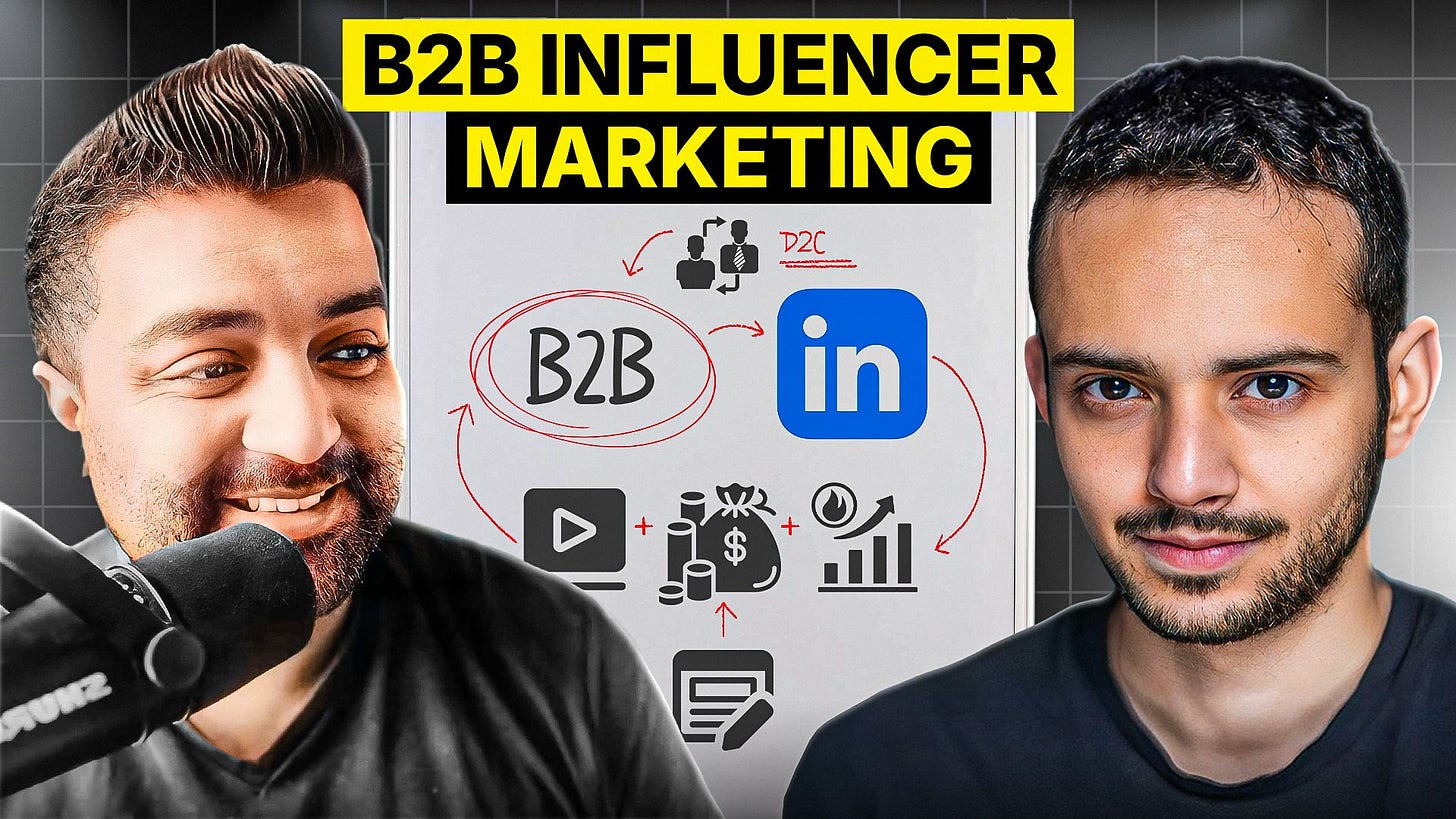The Rise of B2B Influencers: Why LinkedIn is the Next Big Creator Economy
I recently sat down with Aneesh Lal, the founder of Wishly Group, an agency that manages some of the most impactful B2B creators on LinkedIn. From his perspective, B2B influence isn’t just a trend; it’s a shift in how companies engage, educate, and sell.
Let’s unpack the insights from our conversation and explore what it means for founders, marketers, and aspiring creators.
The LinkedIn Revolution: From Job Board to Creator Platform
For years, LinkedIn was seen as little more than a digital resume database. But over the last decade, the platform has transformed into a hub for thought leadership and professional development.
Aneesh shared a striking statistic: only 2-3% of LinkedIn users create content. The other 97% are lurkers, consuming, learning, and making decisions silently. This imbalance means LinkedIn rewards creators disproportionately. A single post can reach tens of thousands of professionals, from decision-makers to future collaborators.
This presents a massive opportunity for professionals and companies alike. As Aneesh puts it, “LinkedIn is the only social media platform where the creation ratio is so low relative to its audience size.”
What Makes B2B Influence Different?
Unlike the B2C influencer world dominated by entertainment and lifestyle, B2B influence is built on expertise and credibility. Creators in this space aren’t selling products with flashy aesthetics. They’re sharing frameworks, lessons, and insights from their craft.
Think about it:
Sales influencers share cold-calling strategies.
Marketing influencers dissect landing page optimization.
RevOps experts talk automation and systems.
These micro-influencers often have smaller audiences compared to TikTok stars, but their communities are highly engaged and, more importantly, full of buyers.
Aneesh saw this gap early. “You have all these subject matter experts on LinkedIn with massive influence, but no one was helping them build media kits, newsletters, or brand partnerships. That was the white space.”
Today, his agency reps 17 creators and manages $150K-$200K/month in campaign spend for them.
The Playbook for Aspiring B2B Creators
So, how do you grow on LinkedIn?
Aneesh suggests starting with three content pillars:
Technical Expertise
What are you uniquely good at? For example, are you a sales closer, a cold-calling machine, or a RevOps wizard?
Share actionable frameworks, lessons learned, and real-world stories.
Social and Personal Values
People connect with people, not just information.
Share personal interests, life lessons, and values.
Cultural or Topical Content
Engage with broader discussions like remote work, mental health, or career growth.
Start with a 60-30-10 split: 60% cultural/topical, 30% technical, and 10% personal. Over time, tweak based on audience response.
Most importantly, don’t forget video.
LinkedIn is doubling down on short-form, vertical video. Similar to TikTok and Instagram Reels, the algorithm favors micro-learning clips. Aneesh’s advice: start posting 2-3 video clips per week. It doesn’t have to be overly polished; authenticity wins.
For Brands: Why B2B Creators Matter
If you’re a B2B marketer still skeptical about influencer campaigns, consider this:
One of Wishly’s creators recently drove a $200K deal for a client from a single referral. The ROI for brands can be huge, but only if done right.
Here are some common misconceptions brands have:
"Can LinkedIn creators actually drive influence?" Yes. They have built trust and authority over years of sharing expertise.
"How do I measure ROI?" Upper funnel metrics like impressions and engagement are easy. Lower funnel metrics require creativity: track webinar signups, pipeline activity within 60 days, or referrals.
"Can’t I just send them a script?" This is where most campaigns fail. Influencer marketing isn’t about renting an audience; it’s about collaborating with a creator’s voice and style.
As Aneesh explained, “The magic happens when you marry the brand’s story arc with the creator’s natural messaging. Otherwise, it feels transactional and falls flat.”
What B2B Can Learn from D2C
Consumer brands have long understood the power of storytelling and cultural relevance. B2B companies are finally catching up.
Some lessons:
Think like a D2C brand: What resonates in pop culture often influences corporate buyers.
Experiment with physical products: Aneesh highlighted brands like Fermat that launched physical merchandise for a software product to create buzz.
Invest in aesthetics and emotion: Professional buyers are still humans; they respond to beauty and story.
The GTM Engineer: A New Role in Modern Sales
Switching gears, we talked about an emerging role in SaaS and tech: the GTM (Go-To-Market) Engineer.
In the old model, sales, marketing, and systems worked in silos. Now, the GTM engineer unifies these functions with tools like:
Clay for data enrichment and social selling.
Dialers like Orum for smarter outreach.
Intent data platforms to track buyer behavior.
This role isn’t just about technology; it’s about aligning strategy and execution across channels.
If you’re a software company, Aneesh’s advice is clear: “Master cold calls, cold emails, and social selling. But don’t forget live events. People are craving in-person connections more than ever.”
What’s Next for B2B Influence?
Aneesh predicts three major shifts:
More Regulations: Expect FTC-style guidelines to apply to LinkedIn creators.
D2C Brands Entering LinkedIn: Airlines, luxury retail, and consumer tech will target business professionals.
Creator Boom: More professionals will commercialize their LinkedIn presence.
For aspiring creators, this is both an opportunity and a warning: competition will rise, and authenticity will be the differentiator.
Final Thoughts: Intention Over Motion
Aneesh left us with a powerful reminder:
“It all starts with mindset and goals. Don’t just post because someone told you to. Set your intention, then build your work-life integration around that.”
Whether you’re a founder, marketer, or creator, this principle applies. LinkedIn isn’t just a place to play the algorithm. It’s where you shape how the world perceives you.
So what’s stopping you from sharing your expertise and building influence today?
If you enjoyed this issue, subscribe to Autodidactaz to get more insights on how to grow, create, and thrive in the new digital economy.
Follow me on LinkedIn: https://www.linkedin.com/in/juancalara/
Share this with someone who needs to start creating on LinkedIn!



